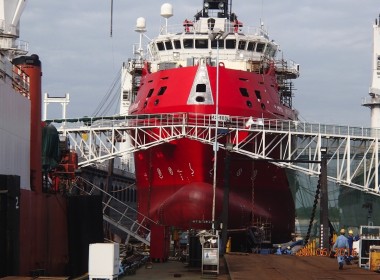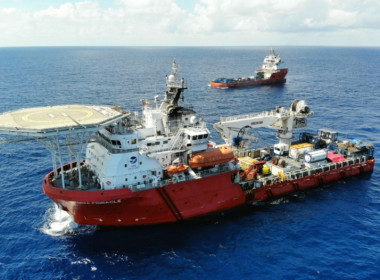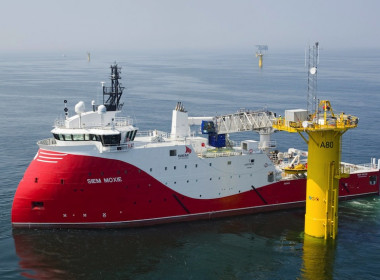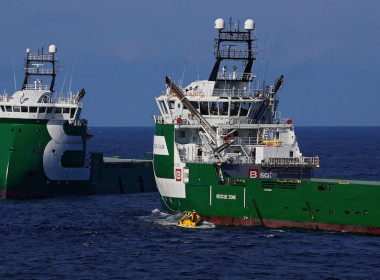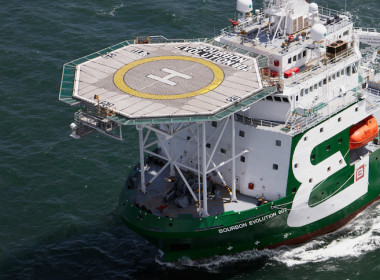COLUMN | More mistakes? Velesto, Shearwater, PXGEO and Polarcus, P&O Maritime Logistics, Bourbon Oceanteam and Boskalis, and James Fisher Subtech [Offshore Accounts]

Last week we looked at mistakes – mistakes from lenders in Singapore to Swiber and KrisEnergy (here), and a terrible error of judgement that led to the capsizing and sinking of the liftboat Seacor Power with the the loss of thirteen lives in the Gulf of Mexico last month (here).
Further developments in Seacor Power case
Now ABC’s local affiliate in Louisiana is reporting (here) on a fresh lawsuit filed in federal court under the Jones Act against Seacor Marine as owner, and Talos Energy as charterer. The widow of the vessel’s master Captain David Ledet alleges that the liftboat’s owner told her husband “to sail into the severe weather in the Gulf of Mexico before it capsized.” She is seeking damages from the company for his death.
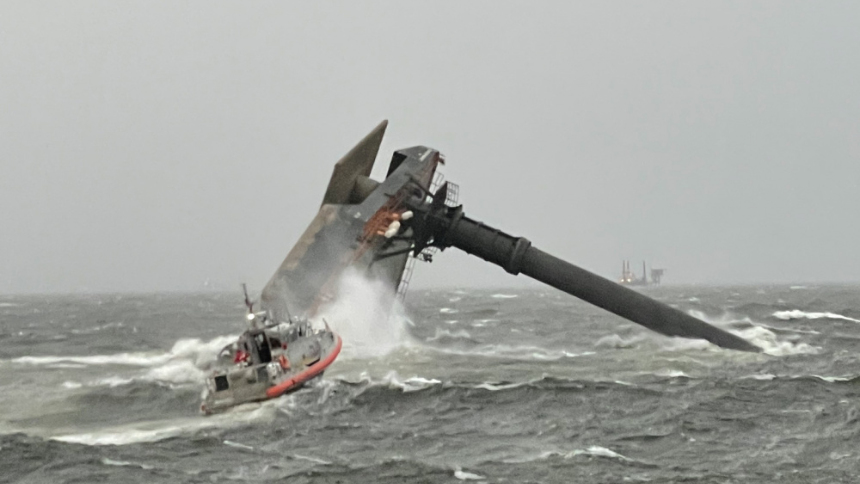
This claim contradicts statements made by the CEO of Seacor Marine to the press in the aftermath of the incident. John Gellert stated that the master made the decision to sail the doomed jackup out into the storm, although he was at pains to explain that he couldn’t speculate on the weather at the time (here).
Whatever happened should never happen again, and we welcome a clear explanation for the tragic events of April 13.
More problems offshore Malaysia
As I write, initial reports are coming in (here) on social media that the Velesto-owned jack up rig Naga 7 has suffered a “punch through” on one of its legs off Bintulu, Borneo, whilst preloading, prior to commencing drilling a well for ConocoPhillips. The rig took on a dangerous list after the leg buckled, and the crew have been evacuated. Fortunately, all 101 persons on board are accounted for and reported safe.
The 150-tonne AHTS Perdana Marathon, and the Bumi Armada-owned PSV Armada Tuah 305 led the rescue efforts.
Naga 7 isn’t the first time and won’t be the last
That’s one way to shrink the jackup fleet. Velesto is a Malaysian-listed company that owns six other premium jackups and four hydraulic workover units. It reported a US$120 million loss for 2020 as the value of its rigs was impaired (here). Now Naga 7 looks further impaired – literally.
We noted in our Seacor Power piece that two liftboats in the Gulf of Mexico were lost in 2018 and 2019 in similar incidents.
Punch throughs are the leading cause of serious jackup drilling rig losses and damages. Most recently, Rumailah, owned and operated by Gulf Drilling International, a subsidiary of Gulf International Services, collapsed in the Al-Shaheen field in Qatar in July 2015 (here).
PXGEO emerges like a phoenix
In February we reported on a collapse of a different nature – the liquidation of marine seismic player Polarcus after its lenders pulled the plug on the business, fired all the staff, and seized six of its vessels (here).
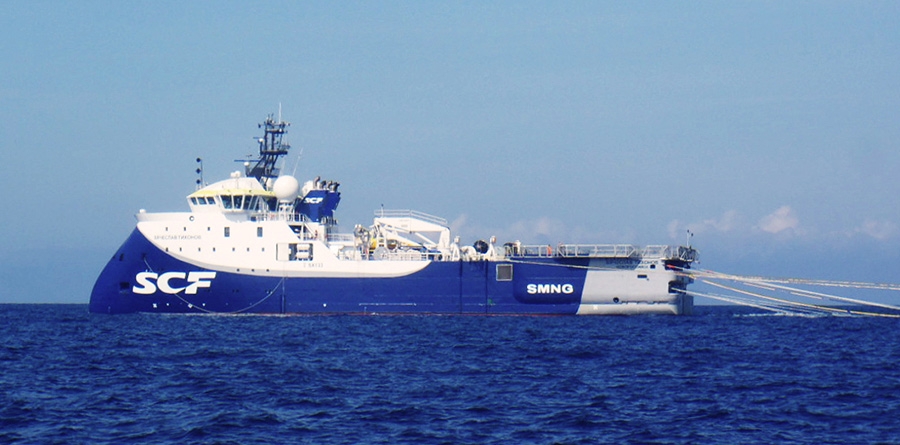
The seventh seismic vessel, Vyacheslav Tikhonov, was outside the reach of the vengeful creditors and was quickly sold in its bareboat charter to PXGEO, a newly founded seismic player run by the former Polarcus CEO Duncan Eley and most of the former Polarcus management team (here).
PXGEO also bought a 14-streamer seismic vessel, PXGEO 2 (the former Fa Xian 6, built in 2014) and recently acquired Fugro’s ocean bottom node subsidiary Seabed Geosolutions for US$16 million.
Six sinking ships rescued by Shearwater
Last week, the Polarcus creditors found a home for the six seismic vessels they had seized – they sold them to Norway’s Shearwater, which has now emerged as the industry consolidator after its own US$437 million refinancing in November, which we reported on here.
There’s a twist, of course. The main banks that foreclosed on Polarcus are actually the ones extending the credit that Shearwater used to buy both the vessels and a pile of Polarcus’ seismic equipment under a separate package. They are also amongst the primary lenders to Shearwater itself, and the transaction simply doubles up on their exposure to the troubled seismic sector.
The emergence of PXGEO means that the destruction of Polarcus doesn’t even reduce the number of players in marine seismic acquisition, although it does strengthen Shearwater’s position as the now dominant player in the 3D marine acquisition industry.
What DNB takes away with one hand, it gives back with the other
Shearwater’s press release (here) whilst touting the “fleet renewal” of buying six relatively young ships also explains that “the transactions are financed through a new vessel loan facility provided by DNB and GIEK of US$107.5 million and a convertible loan from Rasmussengroupen in the amount of US$85 million.”
Rasmussengroupen is already a major shareholder in Shearwater and this convertible loan will allow it to increase its stake if it wishes. More doubling up.
At the time of Polarcus’ demise, we noted that DNB, DVB and Eksportfinans were the biggest lenders to the company. GEIK is the Norwegian Guarantee Institute for Export Credits, which provided the guarantee to Eksportfinans and took over the loan when it was foreclosed.
So who refinanced Shearwater in November?
“The new facilities with two- and four-year maturities have been signed with DNB Bank, SpareBank 1 SR-Bank, DVB Bank and GIEK.”
This isn’t really a restructuring, more a consolidation by lenders, who still have large exposure to the seismic sector.
More selling – module carriers for sale
Other owners have also taken the course of trying to sell their mistakes, like DNB and GEIK.
We were surprised (No, really, we were!) to see that three of the river to sea module carriers operated by P&O Maritime Logistics (former Topaz Energy and Marine) were already available for hire in February, less than four years after they were delivered. P&O is now marketing the units to the industrial and renewables sectors in the North Sea, the Baltic and the Mediterranean. Additionally, two more similar module carriers are being advertised for sale by shipbrokers Offshore Solutions Unlimited (here).
P&O told us that these units are actually owned by KMTF, Kaznmortransflot, and are working in the Caspian Sea as well.
You may recall that we had analysed Topaz’s balance sheet and income statement in May 2019 (here), which showed how Topaz had systemically mismatched the depreciation for these exotic and unusual, cigar-shaped, shallow-draught vessels, against the charter periods with Tengizchevroil. The module carriers were purpose-built for service to and from the Caspian Sea for the Chevron affiliate in Kazakhstan and are very specialised for this one trade.
Our analysis suggested that Topaz had calculated the depreciation of the vessels over 12 years. We warned that the fifteen of apparently seventeen module-carrying ships operated by Topaz for Tengizchevroil might struggle to find further work when they came off contract after the minimum charter period of just three years, as disclosed by the company in its triumphant press release (here).
And now the three years has arrived, the first ships are coming free, and similar vessels are advertised for sale at just US$11 million each.
Guess what?
We warned that Topaz’s CEO was unlikely to hang around to witness the financial implications of the folly of building US$300 million of new ships at Vard against three-year contracts: “Of course, by 2022, Mr [René] Kofod-Olsen may have moved on to greater and better things, taking a large (cash) bonus for the fat (non-cash) accounting profits which he has delivered,” we commented.
He did, and Topaz was sold to Dubai’s DP World and rebranded P&O Maritime Logistics later in 2019, in a move which displayed very poor timing on the part of the Emirati buyers.
Mr Kofod-Olsen’s erstwhile deputy Martin Helweg assumed the CEO role a few weeks after the purchase closed, and Mr Kofod-Olsen left the building to later become CEO at V-Ships. Mr Helweg will likely now have to make the inevitable write-down on these unique assets, which appear to have cost around US$20 million apiece to build.
Good luck explaining that one to your bosses at DP World, Mr Helweg, but fortunately, there is now US$14 billion of net debt on the parent company’s balance sheet, anyway, so that even a hit in the order of US$100 million will be a rounding error in the greater scheme of DP World’s reporting.
Expect the P&O subsea vessels to be axed as well
More of Topaz’s unpleasant balance sheet surprises for DP World were two newbuild subsea vessels from Vard in Norway, contracted at the depths of the industry downturn in 2016 for prices twice what equivalent second-hand tonnage fetched at the time of delivery. Topaz seemed to be very amenable to Vard’s sales pitches, placing around US$400 million of orders with the shipbuilder under Mr Kofod-Olsen’s watch.
Shortly after the takeover, P&O abandoned efforts to create its own subsea division and simply chartered Topaz Tangaroa to Van Oord, whilst sister vessel Topaz Tiamat was bareboated to Boskalis for three and a half years from January 2021, and renamed Boka Tiamat to work in the Changfang and Xidao windfarms in Taiwan.
After the inevitable write-down, expect this unit to be sold by P&O as well. Boskalis has much form in this area….
Bourbon selling big, Boskalis buying
Another company controlled by its banks since early 2020 is Bourbon, as we covered here. Like Polarcus’ lenders, Bourbon’s former lenders (now owners) have been keen to try to recover their money. The sale of the century continues (here).
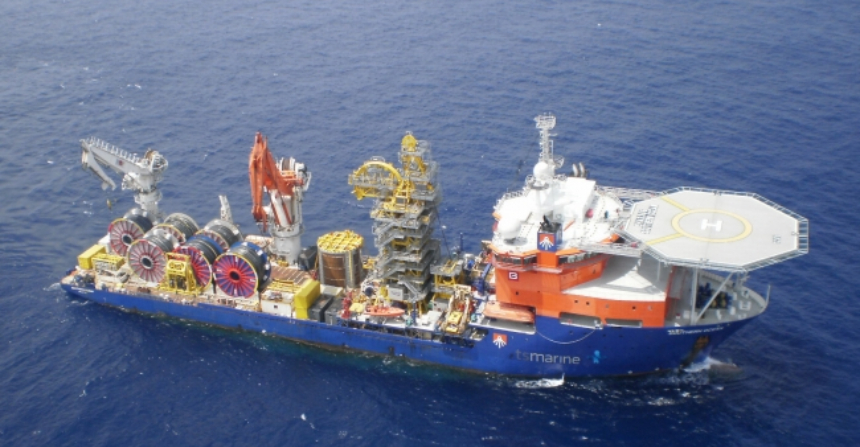
Last month, Bourbon announced the sale of the large construction support vessel Southern Ocean, which is jointly owned by Bourbon and Oceanteam, to Boskalis. Boskalis had previously taken the vessel on hire in January. This appears to have been a “try before you buy” charter by the savvy Dutch player. Boskalis said it was using the vessel for the transportation and installation of suction pile anchors and mooring chains.
“I am pleased to secure this contract with Boskalis and further develop our business relationship and build up backlog in the region,” commented Oceanteam CEO Henk van den IJssel when the charter was announced.
The sale of Southern Ocean marks the abrupt end of that business relationship. The joint venture now owns just one vessel, the construction vessel Bourbon Oceanteam 101, on charter to McDermott.
It can’t be long before that too is sold, as Bourbon shrinks, and Oceanteam focusses on offshore cable-laying, umbilical installations, and on- and offshore cable storage and transport.
James Fisher to sell its dive support vessels?
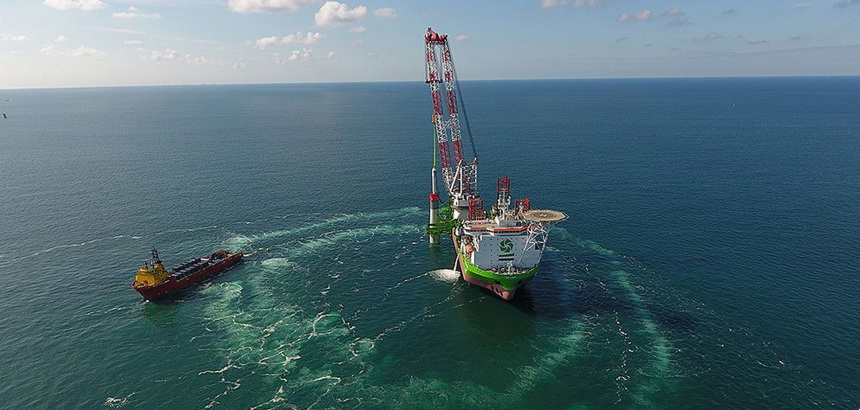
After it reported a US$78 million loss for 2020 and took large writedowns on the ill-advised acquisition of the dive support vessels Subtech Paladin and Subtech Swordfish (here), James Fisher appears to have put up the vessels for sale to try to cut its losses.
They have been circulated by shipbrokers Braemar ACM in London. Both are reported by our source to have been working on spot charters, Subtech Paladin in Nigeria with a Dangote affiliate, and Subtech Swordfish in Qatar.
With Total having now declared force majeure on the Mozambique LNG plant for which Fisher was working on various inshore and jetty developments, expect further bad news from Fisher’s newly rebranded James Fisher Subtech division in the next set of results – again.
Sometimes it is easier to walk away. Fisher shareholders and the owners of P&O Maritime Logistics probably wish they never had their encounters with Subtech and Topaz, respectively, in the first place.
Background Reading
For an explanation of punch through incidents on jack-up rigs, and some dramatic photos of a Maersk rig suffering a punch through incident see the DrillingFormulas blog here.
News on the incident involving Velesto’s rig Naga 7 is here.
The rig’s contract with ConocoPhillips was covered in The Star in Malaysia here.


